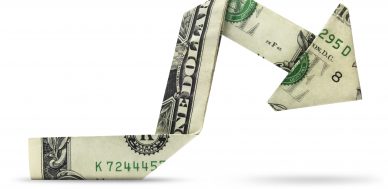Future Not Looking Good for the Dollar
There’s a perfect storm brewing, and it suggests that a collapse in the U.S. dollar could be nearing.
While the greenback has been the world’s reserve currency for years, other emerging currencies, like the Chinese renminbi (also known as the yuan), are slowly displacing the U.S. dollar as the reigning champ.
Last year, the renminbi was added to the International Monetary Fund’s (IMF) special drawing rights (SDRs). And between the fourth quarter of 2016 and the first quarter of 2017, central banks’ holdings of the renminbi increased by almost five percent. (Source: “Currency Composition of Official Foreign Exchange Reserves (COFER),” International Monetary Fund, last accessed September 8, 2017.)
Central banks now hold more Chinese renminbi than they hold Swiss francs.
Please keep in mind that it was only in the fourth quarter of 2016 that central banks started to report their Chinese renminbi holdings. Also note that central banks do not “binge buy” or “binge sell” currencies; they enter and exit their positions slowly.
As for global trade being done predominantly in the U.S. dollar, this is starting to change.
In old-school trading, if “Company A” in China wanted to trade with “Company B” in Russia, “Company A” would have to turn its renminbi into U.S. dollars first and then pay “Company B.”
This is no longer the case. China is opening up renminbi trading hubs around the world. Currently, there are 23 official trading hubs. (Source: “Renminbi trading ambitions fail as Chinese spurn local hub,” The Australian, August 28, 2017.)
The idea behind these trading hubs is simple: Chinese firms can raise money in renminbi in other countries, and these companies can trade in renminbi instead of the U.S. dollar. In 2015, a renminbi trading hub opened up in Canada.
Let me make it clear: the U.S. dollar collapse won’t happen right away. I believe there will be a slow and steady decline of the dollar at first and then, eventually, confidence will be lost in the currency, and that’s when a major sell-off will come.
The renminbi is making a strong case for a U.S. dollar collapse.
As the chart below shows, investors are losing confidence in the greenback already.
Chart courtesy of StockCharts.com
Since the beginning of 2017, the U.S. dollar index, the value of the U.S. dollar relative to other major currencies, has declined more than 10%.
The dollar is defying the odds. According to basic economics, when interest rates go up, the value of a currency goes up. This is not happening for the dollar. In fact, we are seeing the complete opposite: as interest rates rise in the United States, the greenback is declining in value. This is unheard of.
A collapse in the value of the U.S. dollar will have a dire impact across our economy, with the bond market and the stock market being the biggest victims.
